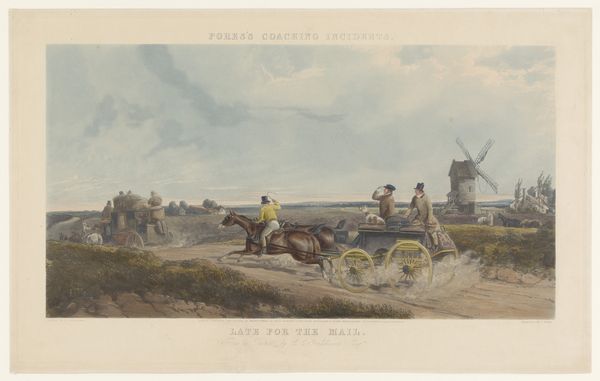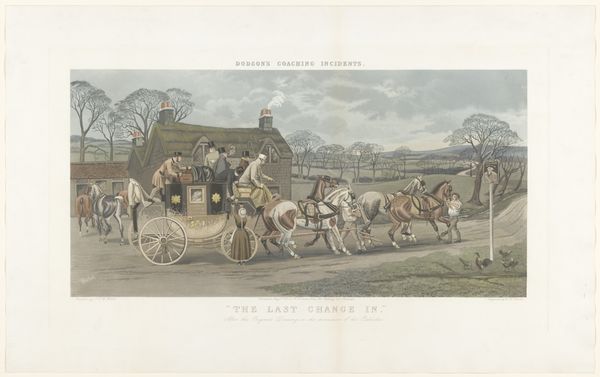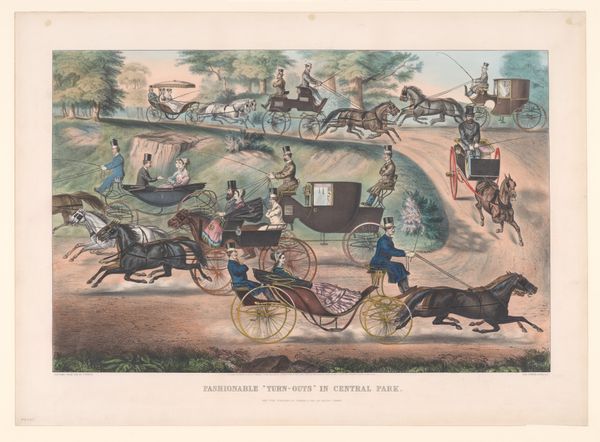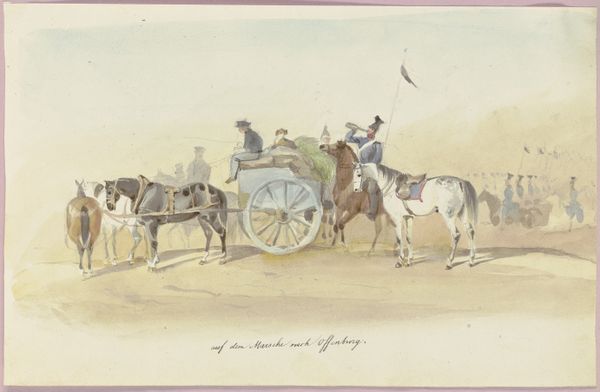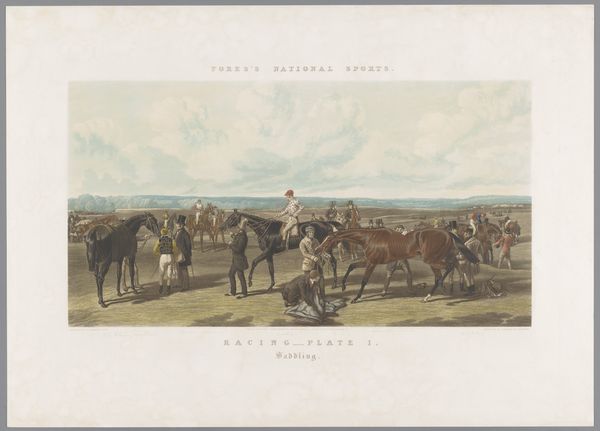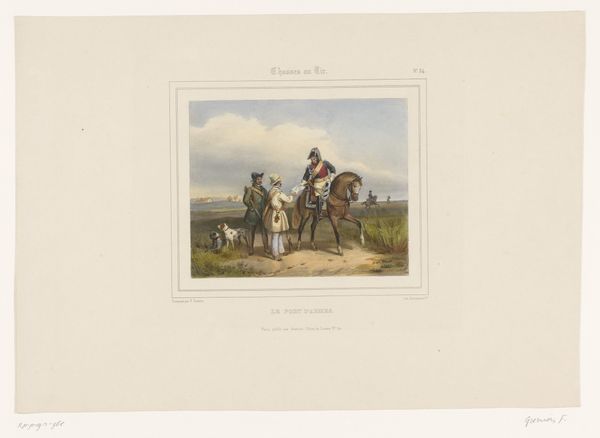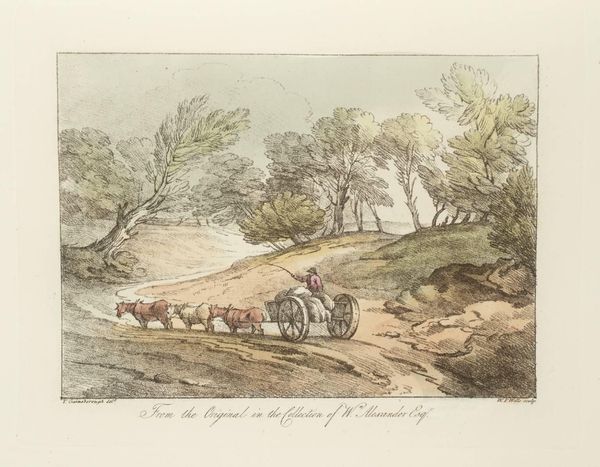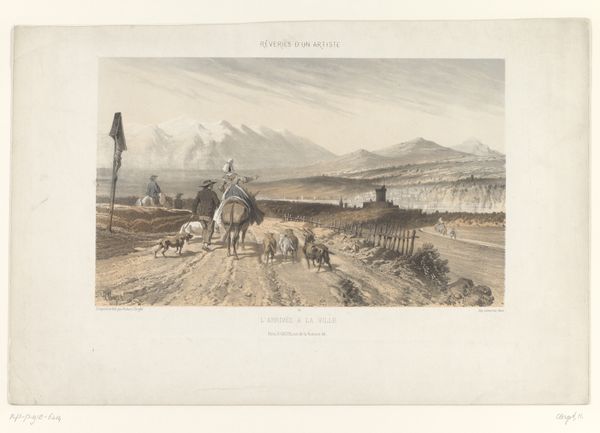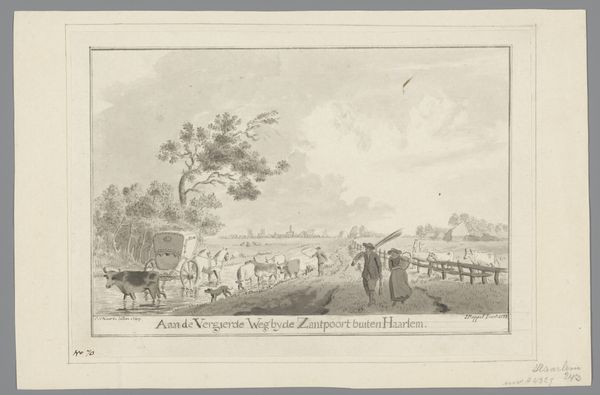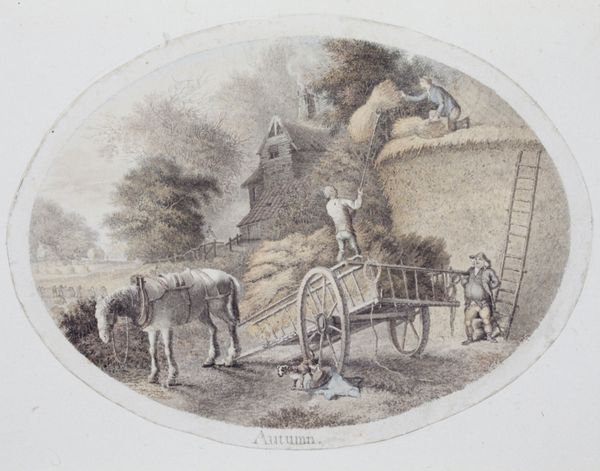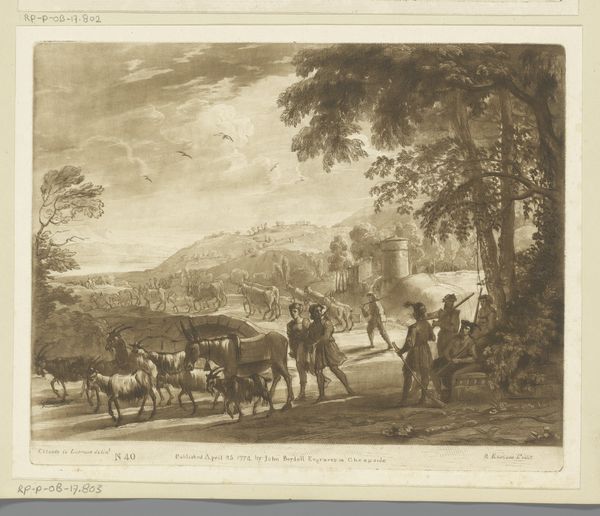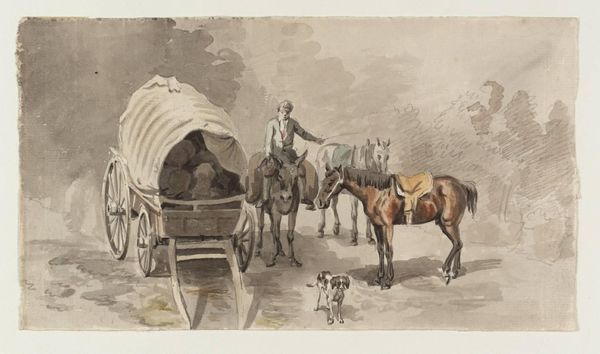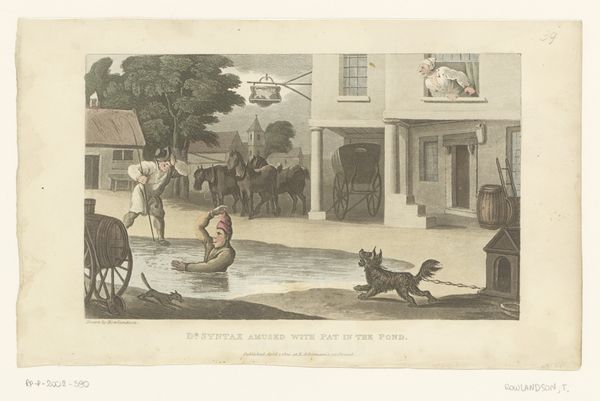
Dimensions: height 406 mm, width 653 mm
Copyright: Rijks Museum: Open Domain
Curator: Let's consider "Two Coaches on a Country Road," a print, potentially etching, from the 19th century residing at the Rijksmuseum. What's your first take on this genre scene? Editor: It feels… like a snapshot of its time? A record of travel and leisure, but with this inherent separation between the passengers and the landscape around them. What can you tell me about how we might interpret this work in its historical context? Curator: Precisely! Note how the two carriages embody differing social strata: One clearly awaiting passengers and the other making haste with its cargo. Doesn't this representation inherently comment on themes of labor and social mobility during a period of industrial transformation? The "gentleman" holding the top hat, while comically greeting the newcomers, appears powerless to make the connection. The landscape is passively accommodating to these players in an elaborate social theatre. The figures in motion – where do they belong in this equation? Editor: So it's not just about the romance of the road, but also about the politics of it? The access to it, who gets to move, and who waits. Is this the emergence of the modern traveller? Curator: I think it's fair to say it signals that. Travel was becoming a signifier of class and progress. How might we analyze it today considering our modern crises of mass movement and climate catastrophe? Is the relative harmony in this image only a moment's pause before our disruption of those social and ecological roads? Editor: That's given me a completely new way of looking at what I originally considered to be a simple record of transport! Now I see an era on the cusp. Curator: Exactly! Recognizing those shifting social dynamics, allows us to reconsider art's role, and our role, in either critiquing or cementing existing norms.
Comments
No comments
Be the first to comment and join the conversation on the ultimate creative platform.
